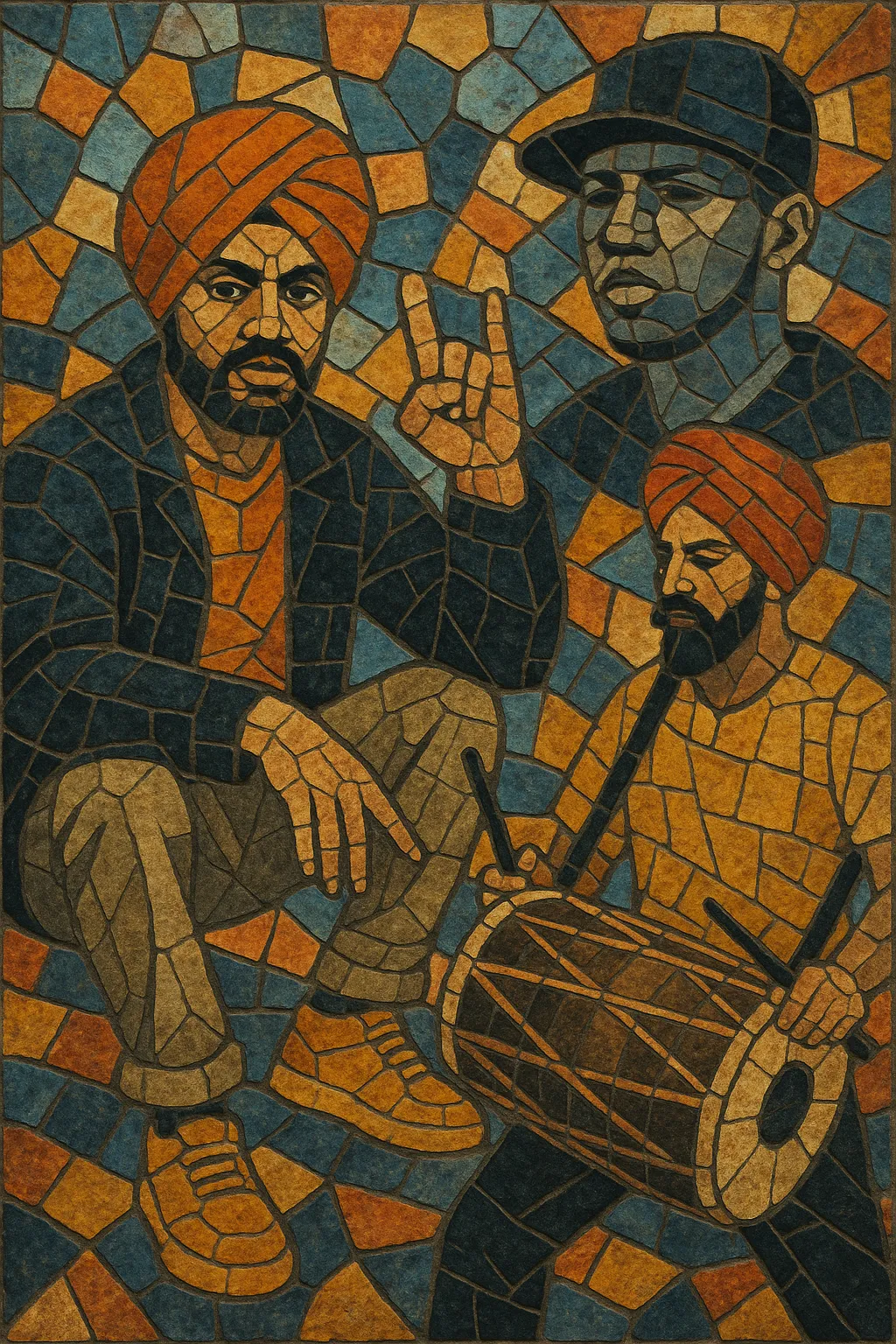
Punjabi hip hop blends the rhythmic vocabulary, flows, and production aesthetics of global hip hop with Punjabi-language vocals and the dance-forward energy of Punjabi folk and bhangra.
Signature elements include dhol-driven grooves, tumbi riffs, and folk-inspired melodies layered over 808s, trap-style hi-hats, and modern sampling. Lyrically, it ranges from bravado and social commentary to romance and diasporic identity, often switching between Punjabi and English (and sometimes Hindi/Urdu) for impact.
The sound emerged in UK Punjabi and wider South Asian diaspora scenes before exploding across Punjab (India) and Pakistan, later creating strong hubs in Canada and the UK. In the 2010s and 2020s it absorbed trap and drill textures, elevating its global reach while keeping the celebratory, anthemic character central to Punjabi music culture.
Punjabi hip hop took root in the UK’s South Asian diaspora club circuits, where bhangra, hip hop, dancehall, and the Asian underground cross-pollinated. Producers and DJs began pairing Punjabi vocal styles and folk instrumentation (dhol, tumbi) with boom-bap and club-oriented beats, laying a stylistic foundation for Punjabi rap.
Global moments like Panjabi MC’s "Mundian To Bach Ke" (which surged worldwide in the early 2000s) demonstrated how Punjabi rhythms could ride hip hop frameworks. Around the same time, pioneering Punjabi-language rappers (notably Bohemia) codified a rap-first approach, proving that Punjabi could carry complex flows and autobiographical storytelling over hip hop production.
The 2010s saw a surge from Punjab and adjacent diasporas. Artists such as Yo Yo Honey Singh and Badshah pushed sleek, hook-heavy, club-ready records that crossed into Bollywood and pan-Indian pop. Streaming and YouTube accelerated growth, while Canadian and UK Punjabi scenes added polished visuals and ambitious production values.
The sound absorbed trap and drill aesthetics—808 sub-bass, triplet flows, skittering hats—without losing Punjabi folk DNA. Artists like Sidhu Moose Wala and Karan Aujla carried the style to international charts, with producers (e.g., Byg Byrd, The Kidd, Manni Sandhu) sharpening the fusion. The result is a transnational ecosystem connecting Punjab, Pakistan, the UK, and Canada, with Punjabi hip hop becoming a flagship of the broader desi hip hop movement.

